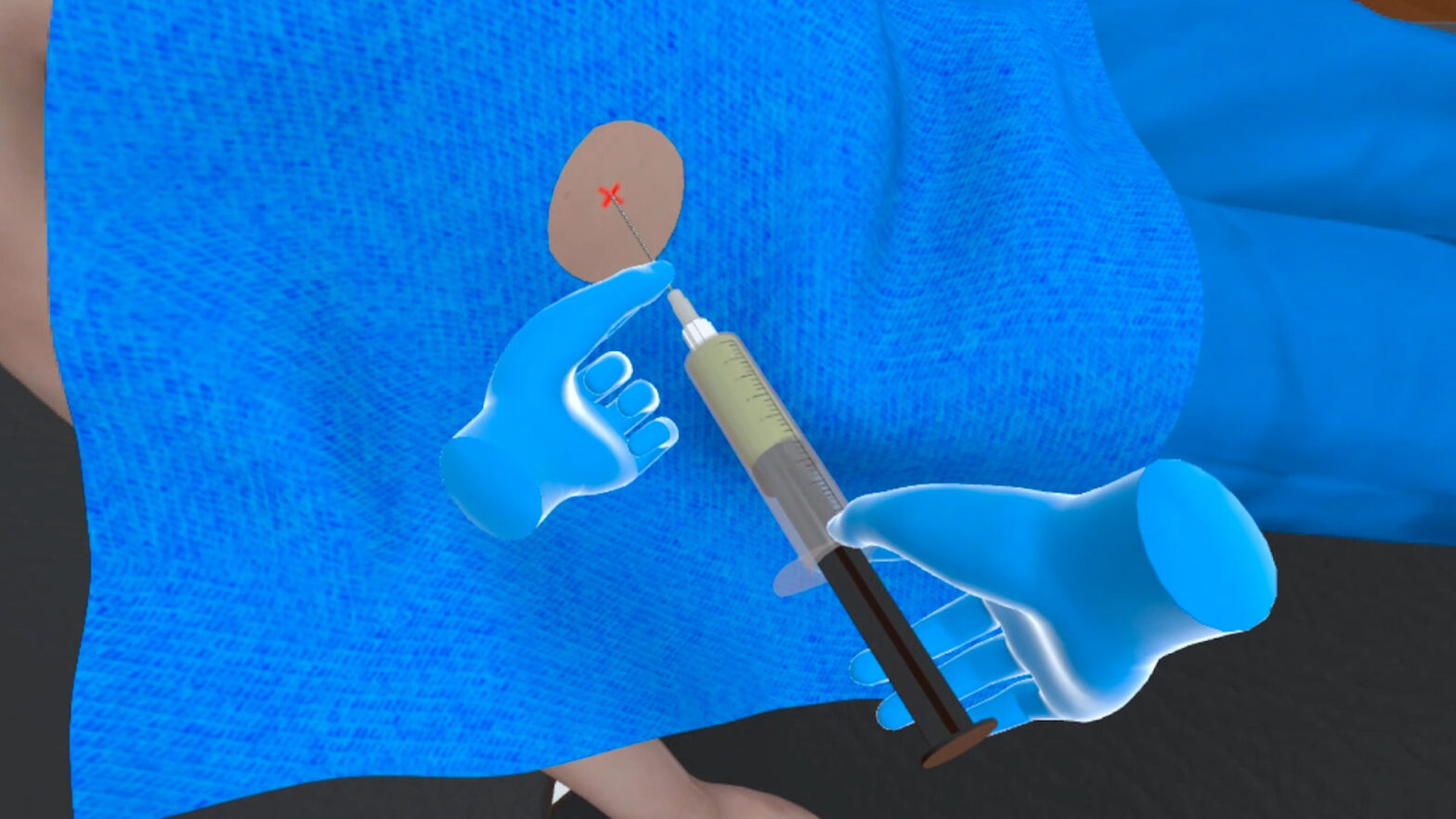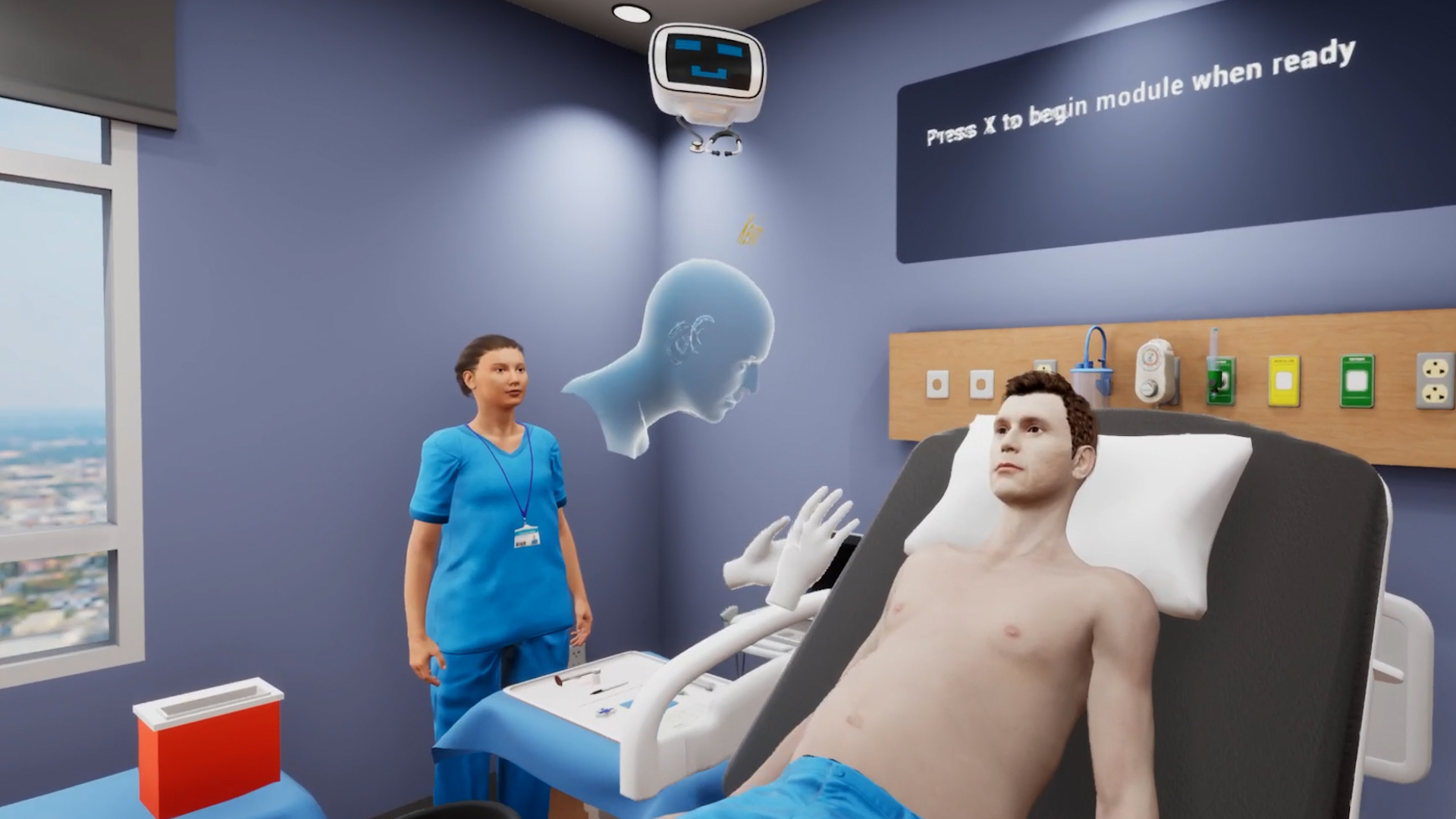Paracentesis
Paracentesis refers to a body fluid sampling procedure in which a needle or catheter is inserted in the peritoneal cavity to obtain ascitic fluid. This could be for diagnostic or therapeutic purposes.
This VR simulation for Paracentesis is designed to help healthcare practitioners practice the procedure in a safe and controlled virtual environment with a virtual patient. With both training and assessment modes, learners can perform the procedure and assess themselves on their performance.
- Utilize bedside ultrasound for improved safety during paracentesis
- Demonstrate surgical steps necessary to perform paracentesis
- Highlight the importance of sterile technique during invasive procedure

- American College of Radiology. (n.d.). Paracentesis.
- MedlinePlus. (2022). Paracentesis.
Retrieved from https://medlineplus.gov/ency/article/003875.htm
Customize Your Program
Get rid of the editor. Adopt in-VR customization.
MedVR Education is bringing to you in-VR customization that will enable you to put together your own simulations by making selections from a wide range of feature choices.
- Select patient from a diverse background
- Choose preferred virtual environment
- Select equipment used in the procedure
- Modify difficulty level of the assessment mode
- …..many more to come

 Multi-player
Multi-player
Sessions Physics-based Interaction
Physics-based Interaction
Core Skills Training

Performing Paracentesis
As a part of this Paracentesis procedure, the user will begin by donning non-sterile gloves and determining the insertion site. Having marked the site, the learner will discard the gloves and don sterile gloves for the insertion procedure. The procedure includes administering lidocaine to the surgical area, inserting the needle into the site and advancing until fluid starts collecting in the syringe. The learner will then attach a 3-way stopcock tubing to the needle and connect the tubing to the bag. After collecting fluid, the learner will turn off the stop cock, disconnect the tubing and remove the needle. After extracting the needle, the learner will place a band-aid over the insertion site. All necessary affordances are provided to complete the procedure with efficiency.
Training
With prompts, guidance and affordances learners are hand-held through the process to practice the procedure in a virtual environment with a virtual patient.
- Photorealistic virtual environment
- Physics-based interactions
- Detailed instructions
- Adequate affordances to assist in task completion

Assessment
Test acquired skills to perform the procedures from start to finish without prompts. An incorrect step will take the learner back to the start to start afresh.
- Live scoring
- Instant feedback
- Adequate affordances for efficient performance
- Time tracking to monitor activity completion







